A Blast in the Past ~ An Excursion to Cuba
In the Fall of 2018, my boyfriend and I were on a search to find an escape from New York City that would be cultural and adventurous, yet not too burdensome on my graduate student budget. After some research, our decision landed on Cuba. The country offered mountains, jungles, beaches, and an interesting history. Though travel to Cuba is now restricted for US citizens, people with passports from many other countries can still visit the country.
Stop 1: A Trip to the 1950s
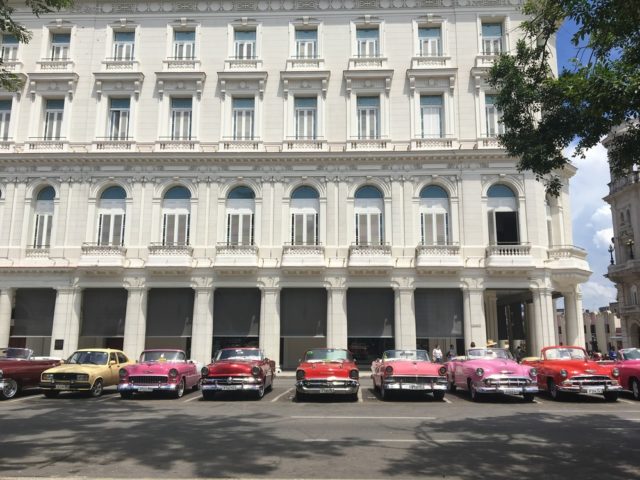
Classic cars lined up on the street
Despite its turbulent political history, the urban fabric of Havana dating from the 1950s endures, offering a taste of a previous era. The government, people, and routines have become more austere compared to the city’s high life and opulence – and corruption – of the 1950s; however, the city’s colonial architecture, classic cars and cobblestone streets remain, and have been repurposed for a new way of life. In the 1950s, Havana was a getaway destination for aristocrats, including Ernest Hemingway. Since the Cuban Communist Revolution in 1959, the country has changed dramatically. Mansions were expropriated from their wealthy owners, and many have been adapted to create eclectic restaurants and places for tourists to stay. Even Havana’s lack of access to Wi-Fi and cellular service adds to the feeling of being in another era. It also compels visitors to disconnect from media and engage with local residents.
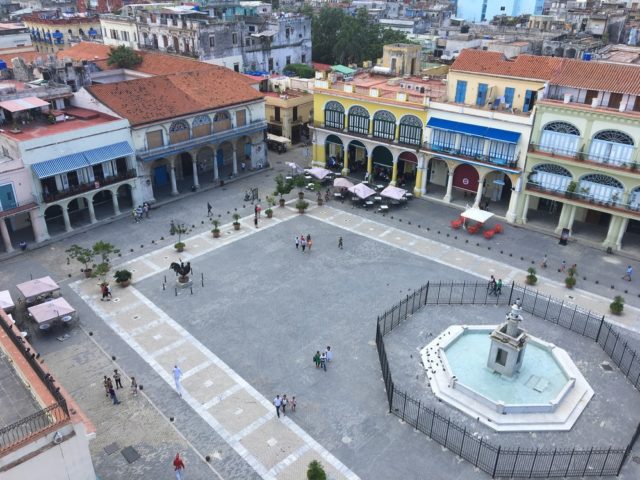
Public plaza in Havana
In Havana, we stayed in a “Casa Particular”, or a private bed and breakfast inside a local resident’s home. Though we were required to stay in Casa Particulares due to travel restrictions by the government, it usefully forced me to practice some Spanish and even learn some sign language.
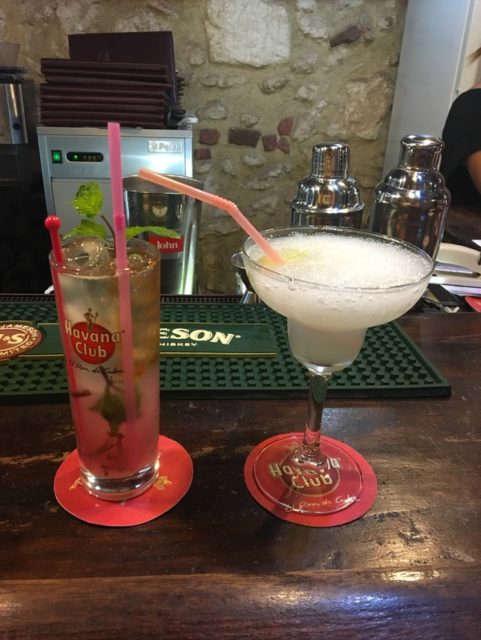
The best mojito in Cuba! Maybe…
Our first stop after landing was El Zaguan, a local bar (where else?!). After the bartender informed us that the mojito was invented in Cuba, we embarked on a quest for the best mojito in Cuba. By the end of our trip, we came to a consensus that our first taste of an authentic Cuban mojito at El Zaguan topped the list. It may have had the advantage of being the first sip after our long flight, but it was delicious, and pink! We were told that the true and original mojito includes “Yerba Buena,” a mint that’s hard to find outside Cuba.
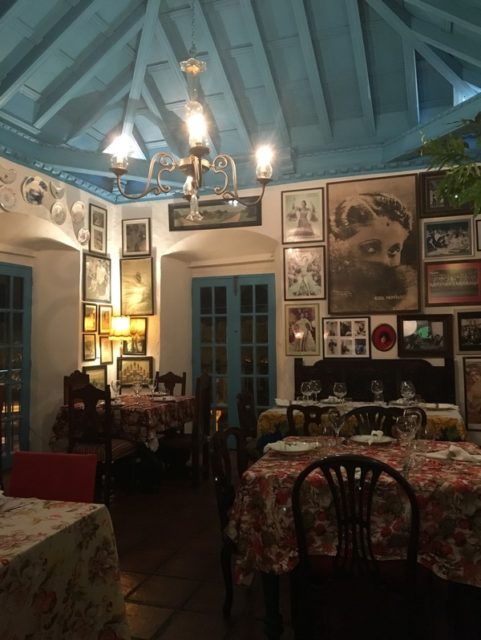
Restaurant Ivan Chef Justo. The interior walls are lined with historical photos and various ceramics
That evening we had dinner at Ivan Chef Justo, a restaurant recommended by our Casa Particular host. He told us that the restaurant’s chef is a former private chef of Fidel Castro. Political ideology aside, how could we pass up on the experience to dine like a revolutionary leader?! The exterior of the building was bright yellow and slightly dilapidated. It did not reflect the marvelous culinary operation behind its walls. The interior walls were lined with historical photos and various ceramics. We tried the seafood paella, beef croquettes, and some other delicious dish I can’t remember. The beef croquettes came on a covered platter filled with smoke; when the cover was lifted, we were greeted with a divine sensory experience. 10/10!
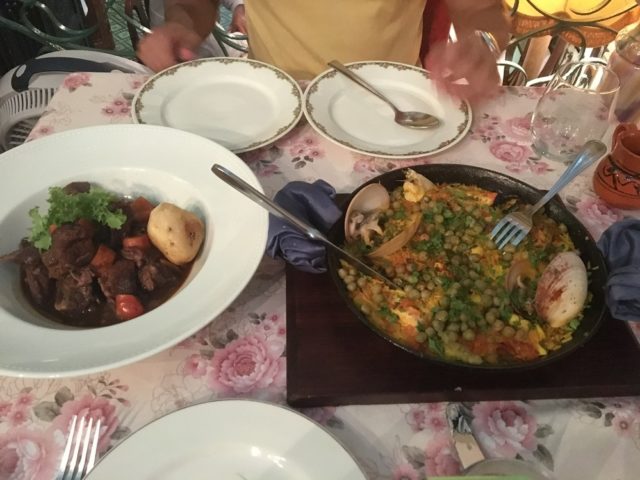
Seafood paella at Ivan Chef Justo
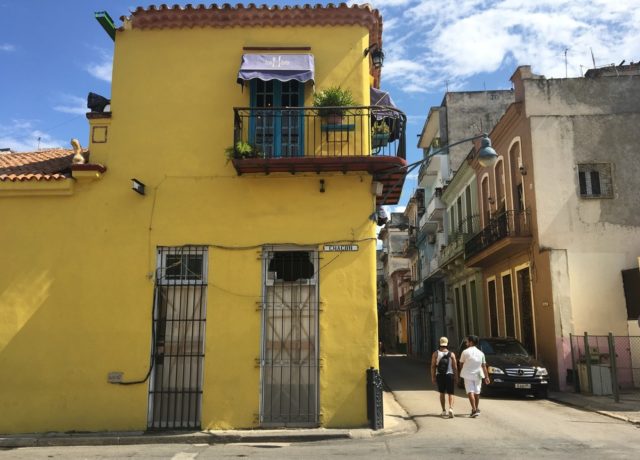
The exterior of restaurant Ivan Chef Justo
The next morning, our host offered us a private tour of the city with his English-speaking friend. His friend, who came over to pick us up shortly thereafter, was not only fluent in English, but highly educated with two degrees in law. He later explained to us that he makes 30 times more as a tour guide than he would with an alternative state-paid job in any industry. Not only did he teach us about Havana’s colonial architecture and history, but we engaged in conversations about Cuban politics and society. He shared his ambition of moving to Europe and his years of struggling to secure a visa. “If the government has any reason to think you won’t return, it’s difficult to leave the country”, he explained. His experience was not unique; this became a theme throughout our visit as we met other highly educated tour guides and cab drivers. (We later met a former doctor-turned-tour guide, former lawyer-turned-cab driver, and former engineer-turned-bartender who had all left previous state jobs for the tourism industry).
Other stops in Havana: Havana Rum Factory, La Guarida (A former mansion repurposed into a restaurant), La Floridita (Ernest Hemingway’s favorite bar that still serves his favorite Strawberry Daquiri).
Stop 2: Lost in the Jungle
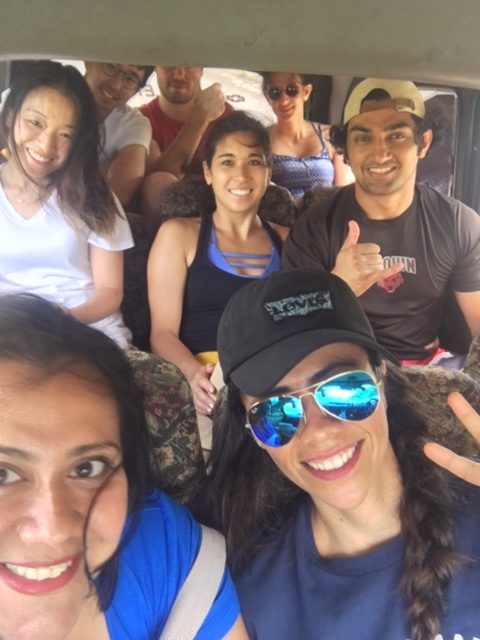
A tight squeeze in our van to Vinales from Havana
The following day, we journeyed to our next stop in Cuba: Vinales Valley. Our host arranged a friend to drive us there, and we were surprised by a packed van! However, with no Wi-Fi or cell service we were grateful we could even find a ride there.
Vinales Valley is a UNESCO World Heritage site known for agricultural activities and mountainous landscape. Our Casa Particular was in the middle of this scenery, which we appreciated for the picturesque setting – so much so that we didn’t fuss over the webbed footed amphibians that surprised us in our room.
Our horse-back riding tour with Riding Vinales was breathtaking. We trotted through the jungle, cooled off in a pond where we were served fresh mango and guava juice, and visited an organic tobacco and coffee farm.
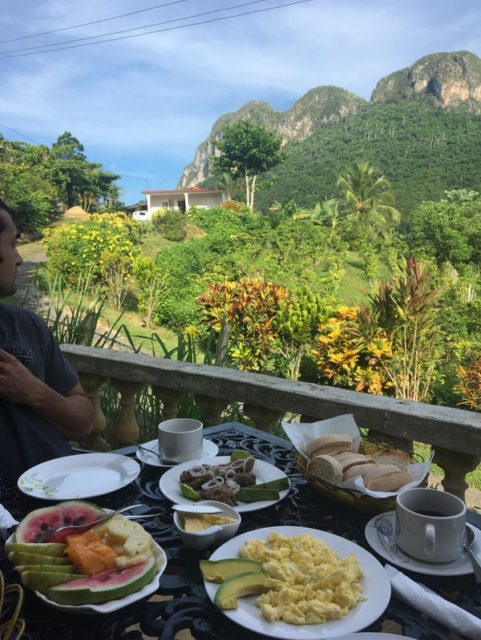
View during breakfast at out Casa Particular in Vinales Valley
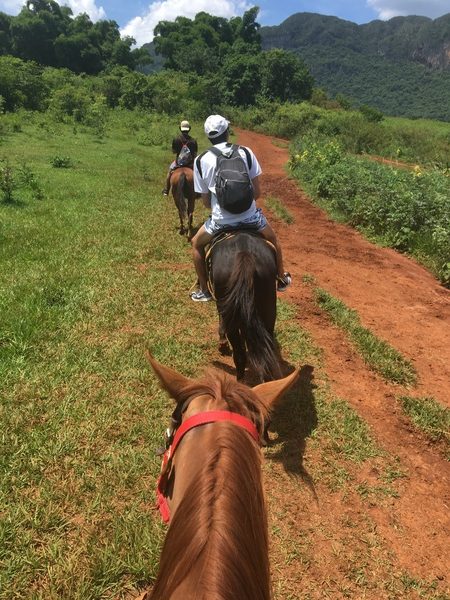
Horseback riding through the Jungle
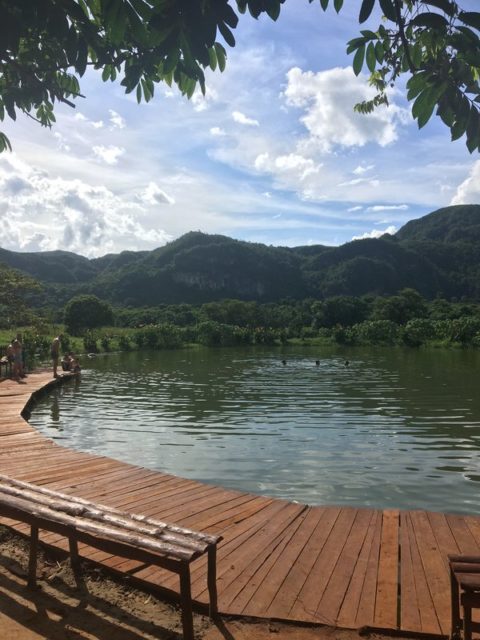
The pond where we cooled off

Yes, coffee does in fact grow on trees!

Led by a farmer through tobacco fields

Our lunch at the farm: plantains, avocadoes, pork, and fresh coconut. We quickly learned that you can never have too much coconut.
Stop 3: Beach time relaxation

Nervously smiling on the scooter. Don’t worry, I wore a helmet when I was moving!
Our final destination on the trip was to the beach town of Varadero. The town is situated on a peninsula and has become known as a tourist/resort town with its kilometers of white sand beaches.
Seeing scooter riders around the town piqued our interest and we went on a search to figure out how to rent one. We weren’t too optimistic on the prospects, but it was much easier than expected. After walking into the rental store, it only took about 10 minutes for the employee to show us to our scooter and hand the keys over. After a few trips up and down the street, we did in fact “start to get the hang of it”.
From Varadero, we decided to embark on a scooter adventure to the “Cueva de Saturno”, a nearby cenote (natural sinkhole) cave. The water was cold, but well worth the plunge!
After Varadero, we returned to Havana to catch our flight back to the Big Apple. As we hoped, our trip was quite the memorable experience. Hopefully we can revisit the country when it is ok to safely travel again!
Reia grew up in Japan, the United States, and other countries. Reia lives in New York City and works in real estate development. She has a BA from Brown University and MS from Columbia University Graduate School of Architecture, Planning & Urban Studies. Her hobbies and passions include swimming, running, and baking.


